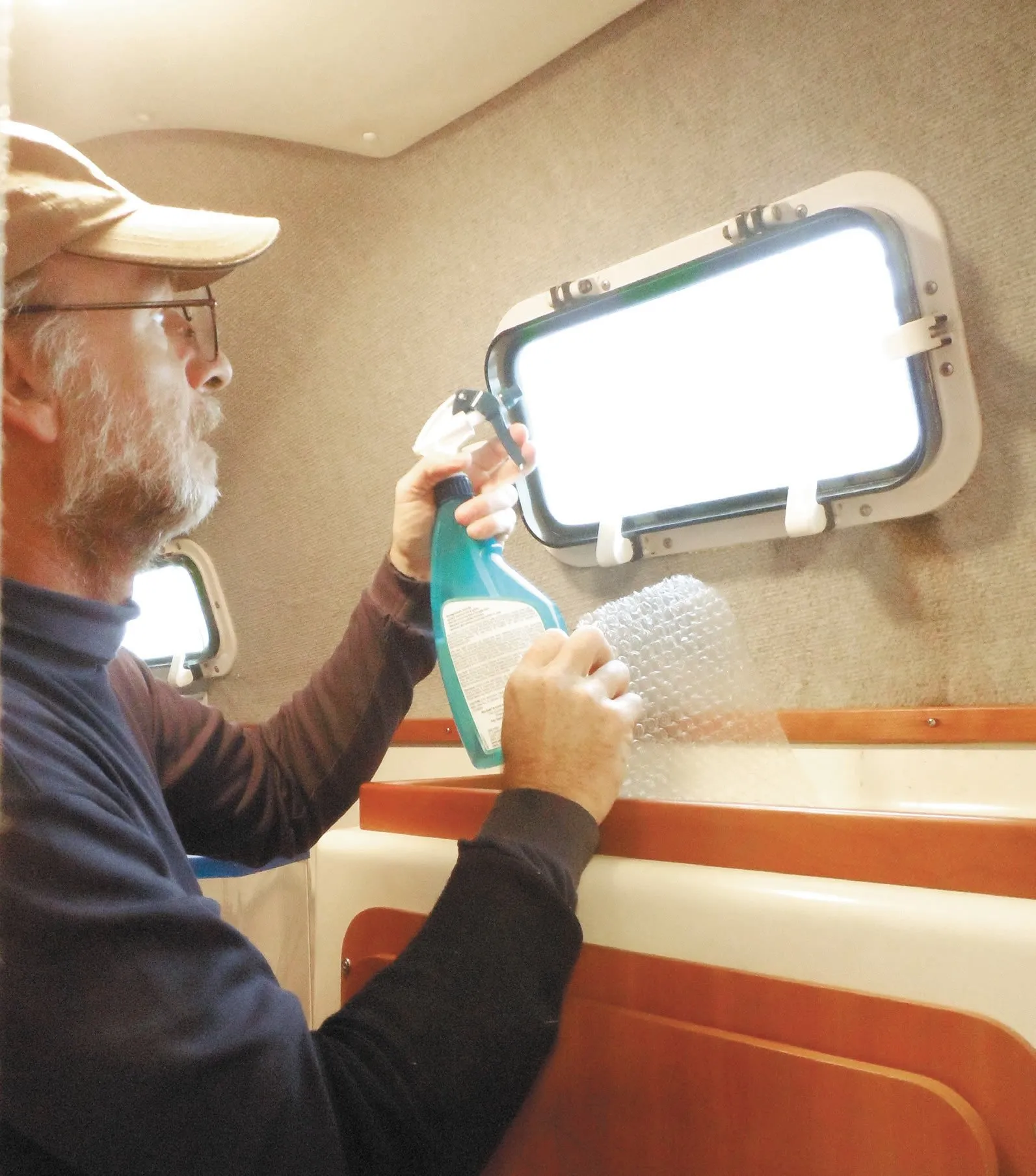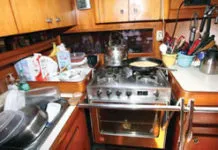All is Lost and Found
A photographer friend stumbled upon this photo of my wife, Theresa, from our cruising days. It was taken in Fiji around 1995. She doesn't usually look this serious; it probably had something to do with having two guests on board a cramped 32-foot Atkin ketch for a couple of weeks. I thought the image illustrated well something that Ive been thinking about lately: the value of resourcefulness while cruising. This notion of the self-sufficient sailor came to mind most recently while watching the movie trailer for All is Lost, in which a single-handed sailor (played by Robert Redford) tries to keep his beloved Cal 29 afloat.
Mailport: August 2013
On strolling through Port Townsend (Wash.) Boat Haven, while I was having some work done on my boat, I saw this boat (photo at right) and the owners attitude written on a sign in front of the boat. It reminded me of your June 18, 2013 blog, Dont Let Refit Pitfalls Derail Your Cruising Plans.
Dehumidifier Field Tests
When boats are buttoned up in humid climates, the battle against mildew begins. With the goal of keeping onboard humidity below 65 percent, we compared compressor dehumidifiers and thermo-electric dehumidifiers, two active systems for removing moisture, with passive-drying desiccan'ts to determine which is best for keeping mildew at bay. The test products included the Eva-Dry 2000, a small, quiet thermo-electric dehumidifier; two compressor dehumidifiers, the Mermaid Dry-Pal and a Sears 30-pint; and two desiccan'ts weve tested before, Damp Rid and Absorbag. The test platforms were an outside garden shed and a 32-foot catamaran moored on the Chesapeake.
Bends and Breaks: Anchor Shank Strength
As more and more anchor-makers source their materials and move their fabricating offshore, Practical Sailor has been fielding an increasing number of questions about anchor quality. Is the tensile-strength steel used to fabricate anchors consistent with the application? Is anyone actually measuring shank strength? And how much does it matter? At the heart of this discussion is shank strength. There seems little point in having a high holding-capacity anchor, if the shank isn't strong enough to cope with projected loads.
Portable Marine Toilets for Small Boats
A few steps above the old cedar bucket, portable marine toilets are essentially glorified waste containers, but a good one offers more comfort than a bucket, wont leak, and can be emptied and cleaned with limited hassle. We tested three porta potties made by Thetford-the Porta Potti 260, the Porta Potti 550P, and the Porta Potti Curve-and two West Marine-brand port potties made by Dometic/SeaLand, the Runabout 962 and the Cruiser 976. Testers rated performance, features, and construction quality.
Portable Chairs for Sitting Under Sail
In our search for stowable, seaworthy seating, we rounded up six padded chairs with self-supporting backrests and compared them to the reigning favorite, the Paradise Sport-a-Seat. The chairs have weatherproof covers and multiple reclining settings with self-supporting, padded backrests. The test field was: the Paradise Sport-a-Seat; Picnic Times Oniva and Ventura designs; G2 Products ComfortSeat; and retail giant West Marines Go-Anywhere Seat 2 and High-back Go-Anywhere Seat 2.
Goo vs. Gaskets for Bedding
I am wondering why boat manufacturers use bedding compound instead of gaskets to seal deck hardware and fittings. It seems, at least on my boat, that the bedding compound dries up within a few years, and then the fittings no longer keep out water. Sure, bedding compound is much less expensive, but wouldnt gaskets a better solution requiring less maintenance?
High and Dry for Winter Storage
With the winter haulout season upon us, Practical Sailor testers thought it a good time to look at ways to keep cabins and lockers dry during off-season storage. There are a number of de-humidifying methods and products available; ventilation is the most effective but electric dehumidifiers, absorbent chemicals (desiccan'ts), and electric heaters also work well. This article takes a look at combatting mildew-causing humidity and focuses on calcium chloride and silica gel desiccan'ts like H2Out, Damp Rid, Nordic Dry, and Fresh Step cat litter.
The Galley: Where Form Meets Function
Cooking a great meal in a cavernous kitchen outfitted with every imaginable culinary device can be difficult enough, but doing it in the confined space of a sailboat presents greater challenges, some the result of ill-conceived galley layouts. But what makes up a dream galley for cooking underway? To find out, Practical Sailor interviewed full-time chefs working aboard sailboats, as well as cruising sailors who have experienced first-hand the challenges of putting together a meal in a pounding sea. The report looks at the ideal location and for the galley, counterspace and ventilation needs, sink and stove must-haves, storage tips, and safety concerns.
Thermos Thermal Cooker Review
Practical Sailor contributor Jonathan Neeves-a bluewater cruiser living aboard his Lightwave 38 catamaran in Australia-has used thermal cookers for 30 years and says that he would never sail without one. In this article, Neeves reviews the Thermos-brand thermal cookers that he uses on board for cooking stews, casseroles, soups, desserts, and other dishes. The thermal cooker is a large, stainless vacuum flask containing one or two fitted saucepans. The insulation traps the heat in the food and uses it as the heat source for cooking the dishes. Using thermal cooker saves cooking-fuel (or power) and allows sailors to safely cook a meal while underway-without constant stovetending or worry over spilled pots-even in foul weather, when slaving over a galley stove can prove challenging and dangerous.


















































